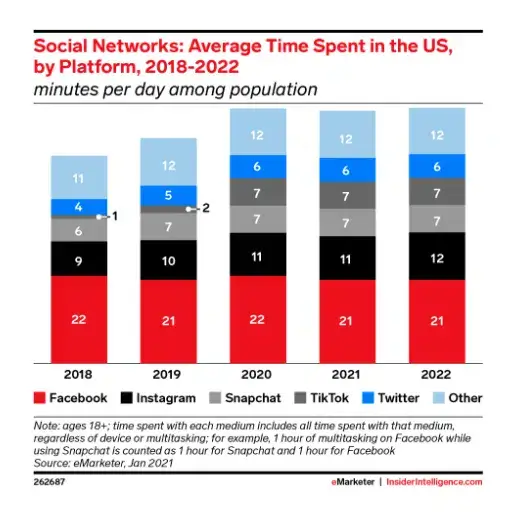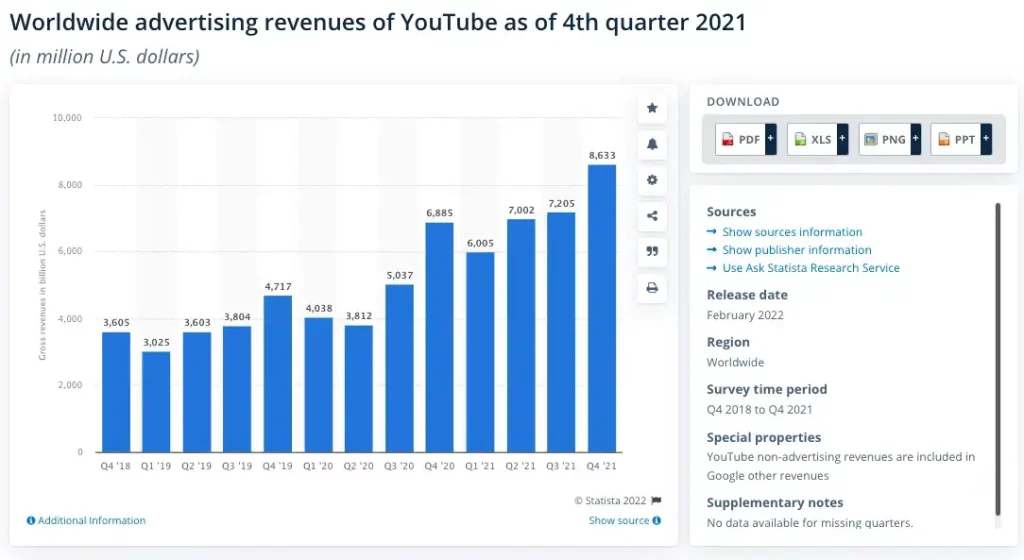Churches have traditionally relied on word-of-mouth and physical signage to spread the word about their services. But in this digital age, everyone is communicating online, ALL the time, so that’s where effective church advertising happens.
That doesn’t mean word-of-mouth is less effective. On the contrary, it’s as essential as ever! But since people primarily communicate online, the tools and resources for spreading your message must include digital assets.
Here are some crucial dos and don’ts for effective church advertising that will help you reach new people and grow your church in the digital age.
Table of contents
5 Must-Do Church Marketing Ideas
Church marketing can be overwhelming. But although churches have a lot of things to consider, start with these five must-do items for a solid digital marketing foundation.
1. Do choose the best channels and platforms.
Research the various marketing channels and platforms to determine which are best for your church marketing. Consider what will help you establish a solid and consistent online presence.
Be strategic; a church marketing plan will ensure your church is visible in the right places and makes a positive impression on potential church members.
Remember that some channels, like email marketing and social media, are free or low-cost.
Then, within your chosen social platforms, you may want to focus on organic reach, targeted ads, or both. Also, you may not be ready to tackle every platform at once! Social media is a powerful tool for spreading the word about church events and establishing an interactive online brand and community for members.
Online church marketing channels to consider include:
- Your church website
- church blog
- email marketing
- Church app (if you have one)
- texting
- social media (Facebook, Twitter, Instagram, etc.)
- YouTube (which is both a search engine and a social platform)
- paid ads
- Google ad grants
Consider which example, out of these many options, will reach more members and be more relevant. Start creating great content there, then take on other approaches over time.

2. Do create a church website and use SEO best practices.
SEO tactics are essential for online marketing. SEO used to be primarily about getting your website discovered in search engines. But it’s now critical for every social platform as well.
That means churches must research keywords and optimize their copy to appear in search results (thereby increasing traffic).
Although you may share across multiple channels, your church site should remain the centerpiece of your marketing plan. People first look for a church online, so a user-friendly website needs to be fast, visually appealing, and easy to navigate.
For website SEO, important tactics include:
- optimizing page titles
- using keywords throughout your content
- including backlinks to other high-authority websites
- using alt tags for images
- optimizing for mobile devices
And there are additional technical SEO elements to consider for improving your search results.
Most importantly, deliver a stellar experience to your website visitors, and your marketing efforts will pay off!
3. Do take advantage of the Google ad grant.
Not all organizations and businesses have the option for free advertising…but if your church is a registered 501c3 nonprofit, you probably qualify for the Google Ad Grant.
This is excellent news for you to market your church!
This grant provides up to $10,000 monthly for advertising on Google Ads. It’s an opportunity to reach new church members online, and there’s no cost to set up or maintain it.
To use this free church advertising option, set up a Google Ads account, create your church ad campaigns, and set up tracking. You need to monitor your account to ensure it’s effective and meets Google requirements like click-through rate.
This can be a lot for churches to keep up with, so check out our Google ad grant page if you want to see how our team can help.
4. Do consider paid advertising.
After maximizing the free ads you can get via the Google grant, you should consider paid digital church advertising options. After all, traditional advertising methods like billboards, radio, and direct mail are expensive and hard to track.
So, if you have some budget dollars, consider church advertising on Facebook and Instagram, as well as buying other ads (Google Ads, Bing Ads). And don’t forget YouTube!
In addition, you can consider purchasing advertising banners on local websites or media pages.

5. Do create great headlines, content, and eye-catching visuals.
Unfortunately, you can’t just pay for ads and expect them to be effective. So whether you’re using paid or organic church advertising methods, your content needs to be stellar!
Focus on creating captivating headlines, content, and visuals representing your church’s values and mission. Pay attention, in particular, to the visual elements: photos, graphics, videos, etc. Test out different types of media to see what works best with your online community.
5 Things to Avoid With Church Advertising
Now that we’ve walked through essential steps for churches in digital marketing, it’s time to clarify what you should NOT do in your marketing efforts.
1. Don’t use a random approach in church advertising.
Although you’ll have some trial and error in online advertising, your approach can’t be random.
If you spend church budget dollars, you’re responsible for doing your due diligence, researching best practices, and carefully monitoring your ad spending.
Churches need to think through a strategic plan and be accountable for results. It’s easy to spend a lot of money on ads and not know whether you’ve effectively reached new members or your community.
2. Don’t set it and forget it.
Somebody should actively maintain paid ads, the Google ad grant, and social media ads. Monitor your church’s click-through rate, watch the ad performance, and adjust your campaigns accordingly.
Optimizing your ads involves picking the right keywords, creating great visuals and copy, and consistently measuring results.
As you figure out what works best, you still need to check in to ensure your ads are effective.
3. Don’t bait and switch church members.
Ensure you accurately represent the church’s message, mission, services, and events in your ads.
Church marketing is tricky. Although you want to compel people to come, you don’t want potential new members to feel misled or like you’re taking advantage of them. You also don’t want to copy other churches or trends and end up being inauthentic.
If your online visitors visit the church and find that what they see isn’t what they get, you could lose people and hurt your reputation. Authenticity is especially important for Gen Z and millennials.
4. Don’t forget about your local community.
You can easily get caught up in the latest online methods and forget that it’s important to advertise locally.
After all, you’re trying to reach people in your community and get them to a church service. So, a community event is perfect for meeting people in your area!
Spots for local advertising include the following:
- Local businesses
- Community events
- Local newspapers
You may advertise in print or in person (connecting with people and handing out marketing materials). Also, online methods for running ad banners or posting info are available.
Think about creative ways to share church information and notify your active community about upcoming events at your church.

5. Don’t try to do it alone.
You can’t singlehandedly market your church. After all, Jesus told everyone to go and tell the good news (that’s the Great Commission). So invite people in your congregation to spread the word.
Shareable social media posts are a great way to empower every church member to promote upcoming events, service times, and info with potential new visitors.
Develop a church marketing team to strategize, produce content, and monitor your platforms and channels. If you can’t afford to hire someone full-time for church marketing, lean on volunteers.
Church marketing ideas for your team include:
- Monitoring conversations on your Facebook page or other social platforms
- Keeping your website or blog up to date
- Researching to find the right keywords
- Taking photos and videos of your Sunday service to use in an upcoming post or ad
All of these tasks (and others) can be time-consuming for church leaders. So share the load and ask people to help you develop other church marketing ideas.
Your Church Website is Only the Start
At the end of the day, you could consider church advertising to be a form of digital evangelism. It’s spreading the good news that we have hope in Jesus and a place to belong in a local church family.
You’re providing an invitation to your services or an upcoming event!
All the dos and don’ts we mentioned earlier are simply ways to create conversation online–which is where most dialogue and exploratory search happens. So we encourage you to use every channel possible to spread the good news, whether it’s your website, Facebook, or a post on another platform.
Are you looking for help with church web design, local SEO, or Google grants? We help with all of that; check out the following pages for more info:
More on Church Advertising





